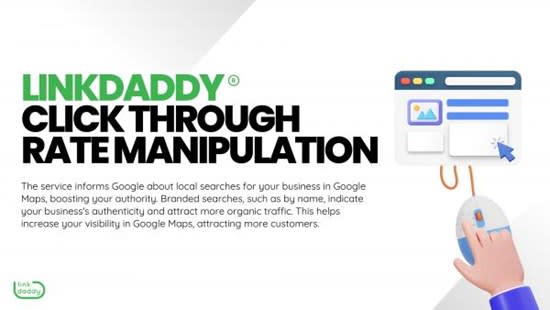Effective CTR Manipulation Strategies to Increase Your Website's Click Rates
Effective CTR Manipulation Strategies to Increase Your Website's Click Rates
Blog Article
Maximize Your Site'S Prospective With Smart CTR Adjustment
In the ever-evolving realm of electronic advertising and marketing, the calculated manipulation of Click-Through Rates (CTR) stands as a vital aspect in unlocking a website's real capacity. By fine-tuning elements such as meta summaries, abundant snippets, and call-to-action switches, businesses can enhance their on-line visibility and drive purposeful interaction.
Comprehending CTR and Its Influence
Click-through price (CTR) is a crucial metric in digital advertising that determines the efficiency of an on the internet marketing project by determining the portion of individuals that click on a certain web link. A high CTR suggests that the advertisement is reverberating well with the target audience, driving website traffic to the internet site, and possibly leading to conversions. In significance, CTR offers as a beneficial tool for measuring the effect of digital advertising initiatives and assisting critical decision-making in the on-line advertising and marketing landscape.
Crafting Engaging Meta Summaries
As digital online marketers strive to maximize their on-line marketing campaigns for optimal influence, one vital element that dramatically affects individual interaction and click-through rates is the crafting of engaging meta descriptions. Meta descriptions are short snippets of message that summarize a page's material and appear listed below the title in search engine results.
Effective meta summaries ought to tempt customers to click on the link by supplying a clear worth recommendation or solution to their question. They ought to be one-of-a-kind for each and every page and properly show the content to set correct expectations. A well-crafted meta summary can enhance the chance of users clicking with to your web site, ultimately improving your CTR and driving more website traffic.
Carrying Out Rich Snippets for Visual Appeal
Enhancing the aesthetic appeal of search engine outcomes can dramatically affect user involvement and click-through prices. Rich snippets are added items of information that can be presented together with your website's meta summary in search engine results.
A/B Testing Call-to-Actions for Optimization
Maximizing call-to-action (CTA) buttons with A/B testing is an essential technique for boosting individual involvement and conversion rates on websites. A/B screening involves developing two variations of a CTA button and offering them to users arbitrarily discover this info here to identify which one executes much better. By assessing metrics such as click-through rates, conversions, and bounce prices, website proprietors can make data-driven decisions to improve the performance of their CTAs.
When carrying out A/B examinations on CTAs, it is vital to focus on one aspect at once, such as the color, message, dimension, or placement of the switch. This systematic technique allows for clear final thoughts on what reverberates finest with customers. Furthermore, it is crucial to establish clear objectives for every examination to measure success properly.
Constant A/B screening of call-to-action buttons allows site proprietors to fine-tune their layout and messaging efficiently. By applying the insights acquired from these examinations, organizations can maximize their CTAs for maximum influence, eventually driving greater engagement and conversion rates.
Leveraging Social Evidence for CTR Boost

Along with customer testimonials, social evidence can also be shown through social media sites interaction, such as displaying the variety of shares, likes, or followers your brand name has. This can create a sense of popularity and trustworthiness, motivating visitors to explore your website additionally. By strategically integrating social evidence elements throughout your web site, you can boost CTRs and drive conversions properly.
Conclusion
In verdict, making best use of site capacity via tactical CTR adjustment involves enhancing meta summaries, implementing rich fragments, A/B testing call-to-actions, and leveraging social evidence (CTR Manipulation Service). These tactics are necessary for attracting even more clicks and interaction, inevitably enhancing traffic and conversions. By concentrating on enhancing on-line presence and producing compelling web content, address sites can properly contend in the electronic landscape and accomplish their max possibility
In the ever-evolving realm of electronic advertising, the calculated adjustment of Click-Through Rates (CTR) stands as a vital element in unlocking an internet site's true capacity. A well-crafted meta description can increase the likelihood of individuals clicking with to your web site, eventually improving your CTR and driving more web traffic.
Using social proof can substantially improve click-through rates (CTRs) on sites by leveraging the influence of positive feedback and testimonials from satisfied customers. CTR Manipulation Press Release. By tactically integrating social proof elements throughout your website, you can boost CTRs and drive conversions effectively

Report this page